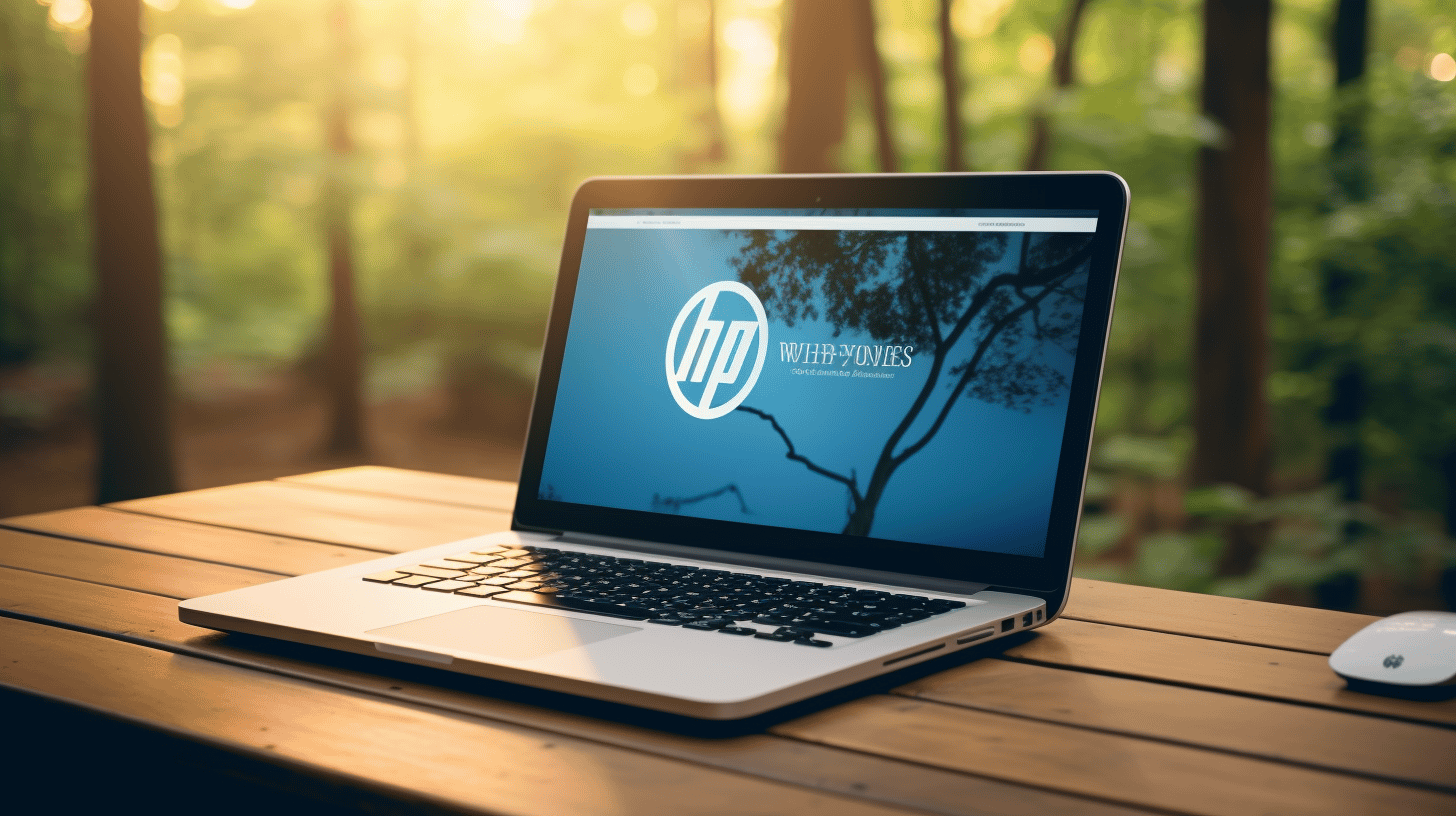在当今的数字时代,拥有强大的在线影响力对于企业和个人都至关重要。在构建和维护网站方面,WordPress 无疑是最受欢迎和最可靠的平台之一。但是,有时您可能需要将 WordPress 网站迁移到新主机或域。无论是由于业务需求的变化、功能改进,还是仅仅寻求更好的性能,成功的 WordPress 迁移都可以确保顺利过渡而不会出现任何问题。
但是迁移 WordPress 网站可能是一项艰巨的任务,特别是如果您不熟悉该过程。它需要仔细规划、注意细节以及正确的工具和技术,以确保一切顺利进行。从备份网站到在新主机上配置 WordPress,迁移过程涉及几个关键步骤。
在本文中,我们将指导您了解 2024 年成功进行 WordPress 迁移的技巧和最佳实践。无论您是经验丰富的 WordPress 用户还是平台新手,我们全面的清单和分步说明都将帮助您自信地完成迁移过程。所以,让我们开始吧,让您的 WordPress 迁移变得轻松而成功!👩💻💪
了解 WordPress 迁移
🚚 将 WordPress 网站迁移到新主机或服务器可能是一件令人兴奋又紧张的事情。无论您是经验丰富的 WordPress 用户还是初学者,了解 WordPress 迁移的概念和流程对于确保顺利过渡都至关重要。在本文中,我们将揭开 WordPress 迁移的神秘面纱,解释您可能需要迁移 WordPress 网站的原因,并探讨一些常见的迁移原因。
什么是 WordPress 迁移?
WordPress 迁移是指将 WordPress 网站从一个服务器或托管提供商移动到另一个服务器或托管提供商的过程。它涉及将所有文件、数据库、插件、主题和设置从现有网站转移到新位置。简而言之,这就像打包整个网站(包括其设计和内容)并将其移动到新家。
为什么需要迁移您的 WordPress 网站?
您可能需要迁移 WordPress 网站的原因有很多。以下是一些常见情况:
- 更换网站托管服务提供商:您可能决定切换到提供更好性能、可靠性或客户支持的新托管公司。迁移您的 WordPress 网站可确保您的网站在过渡期间保持正常运行和可访问性。
- 可扩展性:随着您的在线业务不断增长,您当前的托管计划可能不再足以处理增加的流量和资源需求。迁移到更强大的服务器或升级您的托管计划可实现无缝可扩展性并确保最佳性能。
- 网站重新设计或改造:如果您计划让网站焕然一新或实施重大设计变更,那么创建一个新的 WordPress 安装并迁移内容和功能可能会更有效。这样可以获得一个全新的开始,并避免与现有元素的潜在冲突。
- 服务器迁移或升级:在某些情况下,由于技术原因或基础设施变更,您当前的服务器可能需要重新定位或升级。将您的 WordPress 网站迁移到新服务器可确保持续的正常运行时间和性能。
- 测试和分阶段:对网站进行更改或更新时,最好先在临时环境中进行测试,然后再将其应用到实际网站。WordPress 迁移允许您克隆网站并创建测试环境,而不会影响生产网站。
WordPress 迁移的常见原因
让我们深入了解 WordPress 用户选择迁移其网站的一些常见原因:
| 原因 | 描述 |
|---|---|
| 表现 | 迁移到更快、更可靠的主机可以显著提高您的网站速度。 |
| 安全 | 迁移到具有强大安全措施的主机有助于保护您的网站免受潜在威胁。 |
| 更好的支持 | 切换到具有优质客户支持的托管服务提供商可确保及时提供帮助。 |
| 节省成本 | 从长远来看,迁移到具有成本效益的托管计划可以减少您的网站开支。 |
请记住,成功的 WordPress 迁移需要仔细规划、关注细节并遵守最佳实践。在下一节中,我们将深入探讨迁移 WordPress 网站的分步过程,为您提供全面的指南以确保顺利过渡。
2024 年移民前检查清单
在当今的数字时代,网站迁移已成为企业和个人的一项重要任务。无论您是升级托管、更换提供商,还是仅仅希望提高网站的性能,成功的迁移对于保持最佳的在线状态都至关重要。为了确保顺利无缝地过渡,遵循迁移前的检查清单非常重要。此检查清单将帮助您完成整个过程并避免过程中的任何潜在陷阱。让我们开始吧!
创建备份
在迁移过程中进行任何更改之前,必须备份您的网站。此步骤充当保险单,如果迁移过程中出现问题,可以保护您网站的数据和内容。您可以使用多种方法创建备份,例如使用托管服务提供商的备份工具或使用 WordPress 插件。请记住将备份文件存储在安全的位置,无论是在您的计算机上还是基于云的服务上。
选择合适的托管服务提供商
在迁移过程中,您要做出的最重要决定之一就是选择正确的托管服务提供商。可靠且高效的托管服务提供商可以显著影响您网站的性能、安全性和整体用户体验。选择托管服务提供商时,请考虑以下因素:
- 服务器资源:确保托管服务提供商提供足够的服务器资源来满足您网站的需求,例如 CPU 能力、RAM 和存储空间。
- 正常运行时间保证:寻找能够保证高正常运行时间百分比的托管服务提供商,理想情况下为 99.9% 或更高。这可确保您的网站始终可供访问者访问。
- 安全措施:检查托管服务提供商是否实施了强大的安全措施,例如 SSL 证书、防火墙和定期恶意软件扫描,以保护您的网站及其数据免受网络威胁。
- 技术支持:选择提供可靠客户支持的托管服务提供商,全天候提供服务,以防您在迁移过程中遇到任何技术困难或问题。
检查兼容性
兼容性是迁移网站时要考虑的另一个重要方面。确保网站的主题、插件和其他元素与新托管环境兼容对于避免任何功能或设计问题至关重要。以下是您可以采取的一些步骤来检查兼容性:
- 检查主题和插件兼容性:检查您当前的主题和插件是否与最新版本的 WordPress 和您要迁移到的托管环境兼容。访问主题和插件开发人员的网站/页面以检查兼容性信息。
- 更新主题和插件:如果您的任何主题或插件不兼容或已过时,请将其更新至最新版本。这将有助于确保顺利过渡并防止出现任何兼容性问题。
- 执行兼容性测试:考虑使用临时环境或本地开发设置来测试您的网站与新托管环境的兼容性。这可让您在迁移网站之前识别并解决任何兼容性问题。
评估网站的性能
最后,在启动迁移过程之前,必须评估您网站的性能。此评估将有助于确定需要改进的领域并优化您网站的速度和整体性能。以下是需要考虑的几个步骤:
- 运行性能测试:利用 GTmetrix 或 Google PageSpeed Insights 等工具评估您网站的当前性能。这些工具可帮助您了解可能需要优化的领域,例如图像压缩、缓存或代码最小化。
- 优化网站资产:根据性能测试结果实施优化。这可能包括压缩图像、启用缓存或优化代码以提高加载速度。
- 监控网站性能:迁移后持续监控您网站的性能,以确保一切正常运行且加载时间保持最佳。
通过遵循此迁移前检查清单,您可以最大限度地降低 2024 年迁移网站所涉及的风险和挑战。请记住,充分的准备和仔细考虑每个步骤将有助于成功的迁移体验和更好的在线形象。祝您迁移愉快!
成功迁移 WordPress 的步骤
您的现有托管服务提供商是否已经无法满足您的需求?或者,您找到了提供更多功能和更佳性能的更好的托管计划?无论出于何种原因,将您的 WordPress 网站迁移到新主机都可能是一项艰巨的任务。但不要害怕!通过正确的方法和一些技术知识,您可以顺利地将网站迁移到新主机。
在本文中,我们将引导您完成将 WordPress 网站迁移到新主机的过程。我们将把它分解为七个易于遵循的步骤,确保您保持控制并最大限度地减少任何潜在的停机时间。
步骤 1:准备迁移网站
在开始迁移过程之前,必须采取一些准备步骤以确保顺利过渡。以下是您需要做的事情:
- 备份您的网站:创建 WordPress 网站的完整备份,包括所有文件和数据库。这可确保您在迁移过程中出现任何问题时拥有安全保障。
- 更新你的插件:确保所有插件都是最新的。过时的插件可能会导致兼容性问题或减慢迁移过程。
- 检查断开的链接:运行链接检查器来识别并修复您网站上的任何损坏链接。这可确保您的所有链接在迁移后都能正常工作。
第 2 步:导出 WordPress 数据库
下一步是从当前主机导出 WordPress 数据库。请按以下步骤操作:
- 登录您当前的托管账户 并导航到 phpMyAdmin 工具。
- 选择您的 WordPress 数据库 从左侧列表中。
- 点击导出选项卡,选择“快速”导出方式,并选择SQL作为文件格式。
- 单击导出按钮 下载数据库文件。
步骤 3:将 WordPress 文件上传到新主机
现在您已导出数据库,是时候将 WordPress 文件迁移到新主机了。操作方法如下:
- 访问您的新托管帐户 并导航到文件管理器或 FTP 客户端。
- 找到文件夹 您想要安装 WordPress 的位置(通常是 public_html 或 www 文件夹)。
- 上传所有文件和文件夹 从您的 WordPress 安装复制到新主机上的相应目录。
步骤 4:导入 WordPress 数据库
成功上传 WordPress 文件后,就可以将数据库导入新主机了。请按以下步骤操作:
- 访问新托管账户的 phpMyAdmin 工具.
- 创建新数据库 如果尚不存在。
- 选择新的数据库 从左侧。
- 点击导入选项卡 并选择您之前导出的数据库文件。
- 点击“前往”按钮 导入您的数据库。
步骤5:配置WordPress在新主机上运行
现在您的数据库已导入,您需要配置 WordPress 以在新主机上运行。您需要执行以下操作:
- 打开 wp-config.php 文件 在 WordPress 安装的根目录中。
- 更新数据库设置 以匹配新主机数据库的详细信息。
- 保存更改 并将修改后的 wp-config.php 文件上传回您的服务器。
步骤 6:更新域的 DNS 设置
为了确保您的网站正确指向新主机,您需要更新域的 DNS 设置。操作方法如下:
- 登录您的域名注册商 并找到您的域的 DNS 设置。
- 更新名称服务器 与您的新托管服务提供商提供的服务相同。
- 保存更改,并且 DNS 更改可能需要一些时间才能在全球范围内传播。
步骤 7:迁移后测试您的网站
完成所有步骤后,就可以在新主机上测试您的网站了。以下是您需要检查的内容:
- 网站功能:确保您的所有页面、帖子和插件均正常运行。
- 链接和图片:检查是否有任何损坏的链接或缺失的图像。
- 速度和性能:测试您的网站的加载速度并确保它符合您的期望。
通过遵循这七个步骤,您可以顺利地将 WordPress 网站迁移到新主机,而无需任何麻烦。请记住备份数据、仔细检查设置并彻底测试所有内容,以确保顺利过渡。祝您迁移愉快!
常见陷阱及避免方法
在技术世界中,一路上必然会遇到挑战和陷阱。网站管理也不例外。无论您是经验丰富的网站所有者还是刚刚起步,了解可能出现的常见陷阱并学习如何避免它们都很重要。本节将探讨网站所有者面临的一些最常见挑战,并提供如何避开这些挑战的实用技巧。
忘记备份
网站所有者可能犯的最大错误之一就是忘记定期备份网站。这可能会导致不可逆转的数据丢失,尤其是在发生安全漏洞或服务器问题时。以下是一些避免此陷阱的提示:
- 自动备份:设置自动备份系统,定期创建网站文件和数据库的副本。这样,您就不必依赖更容易被忽视的手动备份。
- 将备份存储在异地:将备份存储在与服务器分开的安全位置非常重要。这样,如果发生服务器故障或安全漏洞,您不会丢失备份和网站。
- 测试您的备份:定期测试您的备份,以确保它们可以成功恢复。这样,您就可以放心,您的备份是可靠的,并且在需要时可以正常工作。
不兼容问题
网站所有者遇到的另一个常见陷阱是兼容性问题。当网站的各个组件(例如插件、主题或脚本)彼此不兼容或与您的托管环境不兼容时,就会出现这些问题。以下是一些避免兼容性问题的提示:
- 安装前研究:在安装任何新插件、主题或脚本之前,请研究它们与您当前设置的兼容性。查看用户评论、支持论坛和开发人员提供的兼容性说明。
- 了解最新动态:将网站的核心软件、主题和插件更新至最新版本。开发人员经常发布更新来解决兼容性问题并增强整体性能。
- 实施前进行测试:在对网站进行任何重大更改或更新之前,请创建一个暂存环境,您可以在其中测试更改而不会影响实际网站。这样,您就可以在兼容性问题影响用户体验之前识别并解决这些问题。
DNS 传播延迟
DNS 传播延迟可能会让网站所有者感到沮丧。当您更改域的 DNS 设置(例如更新名称服务器或添加新记录)时,这些更改可能需要一些时间才能在互联网上传播并被所有 DNS 服务器识别。以下是如何减轻 DNS 传播延迟的影响:
- 最小化 TTL(生存时间):在进行任何更改之前,请降低 DNS 记录的 TTL 值。这可以减少更改传播所需的时间,因为 DNS 服务器会被指示更频繁地检查更新。
- 监控传播:使用在线 DNS 传播检查工具来监控您所做的 DNS 更改的进度。这样,您就可以跟踪更改何时完全传播,并在出现任何意外延迟时采取行动。
- 考虑冗余:如果您的网站严重依赖 DNS,请考虑使用辅助 DNS 服务或具有多个接入点的内容分发网络 (CDN)。这可以缩短 DNS 解析时间,并最大限度地减少传播延迟对网站可用性的影响。
数据库连接问题
数据库连接问题可能会导致您的网站无法访问或性能下降。这些问题通常由不正确的数据库配置或与服务器相关的问题引起。以下是一些预防和解决数据库连接问题的步骤:
- 仔细检查凭证:设置网站的数据库连接时,请确保输入了正确的凭据(例如数据库名称、用户名和密码)。仔细检查是否有拼写错误或错误。
- 优化数据库查询:优化不佳的数据库查询会给您的服务器带来不必要的压力并导致连接问题。确保您的网站代码和插件使用高效的数据库查询实践。
- 监控服务器运行状况:定期监控服务器的运行状况和性能指标。服务器资源使用率过高可能会导致数据库连接问题。考虑实施性能监控工具或咨询托管服务提供商以识别和解决潜在问题。
通过了解这些常见陷阱并实施推荐的策略,您可以自信地完成网站管理之旅。请记住,保持主动性、保持备份和随时了解情况是避免和减轻潜在挑战的关键。
结论
总之,成功迁移您的 WordPress 网站对于确保顺利过渡和不间断的在线状态至关重要。通过遵循迁移前检查表和本文概述的步骤,您可以避免常见的陷阱并使流程无缝衔接。
请记住,拥有可靠且安全的托管服务提供商对于成功迁移至关重要。考虑与 Managed-WP™ 等优质托管 WordPress 云托管平台合作。他们的专业知识和支持可以简化迁移过程并确保您的网站发挥最佳性能。
如有任何问题,请随时联系 Managed-WP 的 24/7/365 WordPress 支持团队寻求帮助。借助他们的主动监控、备份管理和补丁管理服务,您可以放心,您的 WordPress 网站将由可靠的人负责。
大胆尝试,自信地迁移您的 WordPress 网站。通过适当的规划和正确的支持,您可以为您的在线业务带来新的机会,并为访客提供卓越的数字体验。
在此了解有关 Managed-WP 高级托管 WordPress 云托管平台的更多信息。
常见问题
- 什么是 WordPress 迁移?
WordPress 迁移是指将 WordPress 网站从一个托管服务提供商或服务器移动或转移到另一个托管服务提供商或服务器的过程。
- 为什么我需要迁移我的 WordPress 网站?
您可能需要迁移 WordPress 网站的原因有很多,例如切换到新的托管服务提供商、升级到新服务器或更改域名。
- 确保 WordPress 迁移成功的重要步骤是什么?
成功进行 WordPress 迁移的一些重要步骤包括:1. 备份您的网站,2. 导出和导入您的 WordPress 数据库,3. 传输您的网站文件,4. 更新您的域的 DNS 设置,以及 5. 彻底测试您的迁移网站。
- WordPress 迁移是否存在风险?
是的,WordPress 迁移存在一定的风险,例如数据丢失、链接断开和网站停机。但是,通过遵循最佳实践并进行适当的备份,可以将风险降至最低。
- 我应该聘请专业人员进行 WordPress 迁移吗?
如果您几乎没有技术经验,或者对自己处理迁移过程没有信心,建议聘请专业的 WordPress 开发人员或迁移服务,以确保顺利成功迁移。



















